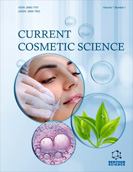Abstract
Topical antimicrobials agents are an attractive therapeutic option due to the high drug concentration achieved in the site of infection with minimal systemic absorption. When used properly, they allow good cure rates with minimal systemic adverse effects conferring great popularity to topical therapy. However the success of topically used drugs entails its main disadvantage: antimicrobial resistance. Indiscriminate use leads to the emergence of antimicrobial resistance hindering the response to treatment and, at community level, risking potential serious systemic infections by resistant germens. These risks prompt us to a judicious use of topical drugs.
In this chapter, topical antimicrobials are addressed focusing on microbiologic coverage and clinical uses. Antibacterials are summarized including the recently appeared nadifloxacin and retapamulin increasing the therapeutic arsenal against methicillinresistant Staphilococcus aureus (MRSA) and mupirocin-resistant MRSA. Antivirals are summarized including off-label uses for recalcitrant conditions. Antifungals are summarized including the topical lacquer options for the combined therapy of onychomycoses. Antiparasitic agents are summarized for the treatment of scabies and pediculosis.
Keywords: Anti-infective agents, antibacterial agents, antifungal agents, antiparasitic agents, antiviral agents, local administration, topical administration, cutaneous drug therapy, topical antibiotics, topical antimicrobials skin.

















